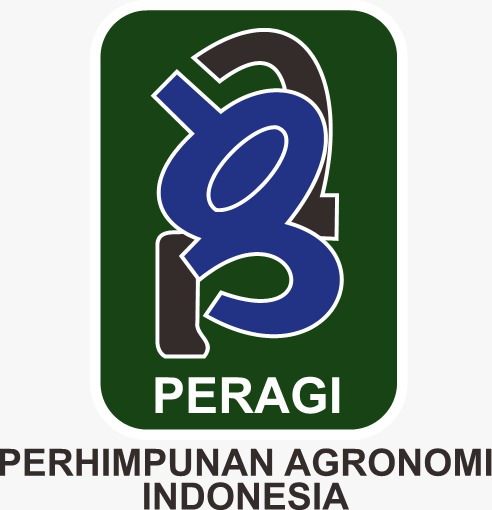Exploration And Characterization Of Hanjeli Nutfah Plasma (Coix Lacrima-Jobi L.) In West Sumatra Province
Abstract
Hanjeli is one of the alternative food crops that are high in nutrients, healthful, easy to grow, and adaptable to a wide range of environmental circumstances. Due to the limited understanding of people who believe Hanjeli is a wild plant or weed, usage of this commodity is still quite low in Indonesia. To save and prevent the loss of genetic resources, it is vital to study, inventory, and characterize Hanjeli so that plant breeders can use it to create greater varieties in the future. The goals of this study are to: (1) learn about the existence and types of Hanjeli plants in West Sumatra Province; (2) collect Hanjeli germplasm; and (3) learn about the morphological diversity and level of similarity of Hanjeli plants as a starting point for germplasm conservation of Hanjeli plants in West Sumatra. This study took place in four districts/cities in West Sumatra Province from June to November 2021. This study is carried out using a survey method with purposive sampling. The NTSYSpc2.02i application is used to present morphological data descriptively and for similarity analysis. 69 Hanjeli accessions were discovered throughout the exploration process. Hanjeli grows between 6 to 1575 meters above sea level and can thrive in a variety of environments, including arid ground and regions near water sources (starting on the outskirts of streams to the edges of rice fields). For all characters, the phenotypic similarity study of Hanjeli plants yielded similarity coefficients ranging from 0.67 to 1. At 0.67, the accessions were divided into two groups: 66 accessions in the first group, and 3 accessions in the second group.
Downloads
References
Astuti SR. 2004. Eksplorasi plasma nutfah tanaman angan di Provinsi Kalimantan Barat. Balai Besar Penelitian dan Pengembangan Bioteknologi dan Sumberdaya Genetika Pertanian. Bogor. Vol. 10 No.1.
Balai Besar Litbang Bioteknologi dan Sumber Daya Genetik Pertanian. 2014. Hanjeli dan Potensinya sebagai Bahan Pangan. http://biogen. litbang.pertanian.go.id/2014/10/Hanjeli-dan-potensinya-sebagai-bahan-pangan/ [diakses 24 Februari 2020].
Balai Besar Litbang Pascapanen Pertanian. 2020. Buku saku - Bahan pangan potensial untuk aniti virus dan imun booster. Kementan.
Bello, OB. 2012. Heritability and genetic advance for grain yield and its related attributes in maize (Zea mays L.). J. Instasci. Micro. Biotech. 2:1-14
Cahyarini RD, Yunus A, dan Purwanto E. 2004. Identifikasi Keragaman Genetik Beberapa Varietas Lokal Kedelai di Jawa Berdasarkan Analisis Isozim. Agrosains 6 (2):79-83.
Daradjat, A.A., M. Noch, dan M.T. Danakusuma. 1991. Diversitas Genetik pada Beberapa Sifat Kuantitatif Tanaman Terigu (Triticum aestivum L.).
Zuariat. 2 (1) : 21 – 25.
Evizal, R. 2020. Review Etnoagronomi perladangan pangan di Indonesia. Jurnal Agrotropika 19 (1) : 1-10.
Fauza, H. 2005. Gambir (Uncaria gambir (Hunter) Roxb.). Dalam: Baihaki, A., Hasanuddin, Elfis, P. Hidayat, A. Sugianto, dan Z. Syarif (Eds.) Kondisi Berapa Plasma Nutfah Komoditi Pertanian Penting Dewasa ini. PPS UnpadKNPN Litbang Deptan. Hal 167-186.
________ 2009. Identifikasi Karakteristik Gambir (Uncaria spp.) di Sumatera Barat dan Analisis RAPD. Disertasi Fakultas Pertanian Universitas Padjadjaran. Bandung. 308 hal.
Ilahi, AY. 2020. Keragaman Fenotipe dan Kemiripan Morfologis Hanjeli (Coix lacrima-jobi L.) di Kabupaten Lima Puluh Kota. JIPI, 22(2) : 130-135.
Jalata, Z., A. Ayana, dan H. Zeleke. 2011. Variability, heritability and genetic advance for some yield and yield related traits in Ethiopian barley (Hordeum vulgare L.) landraces and crosses. Int. J. Plant Breed. Genet. 5:44-52.
Lee, M. 1998. DNA Markers for Detecting Genetic Realtionship among Germplasm Revealed for Establishing Heterotic Groups. Presented at The Maize Training Course, CIMMYT, Texcoco, Mexico, August 25 1998.
Nira,T,D. 2016. Pengaruh jarak tanam berbeda dan berbagai dosis pupuk kandang ayam terhadap pertumbuhan dan hasil hanjeli pulut (Coix lacrima-jobi.L) di dataran tinggi Punclut. [skripsi]. Universitas Padjadjaran. Bandung.
Nurmala T dan Irwan AW. 2007. Pangan Alternatif: Berbasis Serealia Minor. Penerbit Giratuna. Bandung.
Qasim,WA., Nurmala, T., Irwan, A.W., dan Damanik, M.C. 2013. Pengaruh Pupuk NPK dan Pupuk Hayati BPF terhadap Karakter Pertumbuhan dan Hasil Empat Genotip Hanjeli (Coix lacrima jobi L.). Jurnal Pangan, 22 (2) : 357 - 364.
Rahmawati DE. 2003. Estimasi Heretabilitas dengan Metode Regresi Tetua-Turunan dan Kemajuan Genetik Beberapa Karakter Penting Hanjeli (Coix lacrima-jobi L.) di Arjasari [skripsi]. Universitas Padjadjaran. Bandung.
Ramadhan, N., Martinsyah, RH. dan Dwipa, I. 2020. Pertumbuhan Hanjeli (Coix lacrima-jobi L.). pada Kepadatan Populasi Berbeda di lahan Sub Optimal. Jurnal Agroekoteknologi, 12 (2) :128-137.
Simangunsong, A.D., dan Damanhuri, R. 2017. Eksplorasi dan karaktyerisasi pisang mas di Kabupaten Nganjuk, Mojokerto, Lumajang dan Kediri. Jurnal Produksi TAnaman, 5(3), 363–367.
Siregar, UJ, dan Olivia R.D. 2012. Keragaman Genetik Populasi Sengon (Paraserianthes falcataria (L) Nielsen) pada Hutan Rakyat di Jawa Berdasarkan Penanda RAPD. Jurnal Sivikultur Tropika. 3:130-136
Copyright (c) 2022 Nugraha Ramadhan

This work is licensed under a Creative Commons Attribution 4.0 International License.
Authors who publish with Jurnal Agronomi Tanaman Tropika (JUATIKA) agree to the following terms:
Authors retain copyright and grant the Jurnal Agronomi Tanaman Tropika (JUATIKA) right of first publication with the work simultaneously licensed under a Creative Commons Attribution License (CC BY 4.0) that allows others to share (copy and redistribute the material in any medium or format) and adapt (remix, transform, and build upon the material for any purpose, even commercially) with an acknowledgment of the work's authorship and initial publication in Jurnal Agronomi Tanaman Tropika (JUATIKA).
Authors are able to enter into separate, additional contractual arrangements for the non-exclusive distribution of the journal's published version of the work (e.g., post it to an institutional repository or publish it in a book), with an acknowledgment of its initial publication in Jurnal Agronomi Tanaman Tropika (JUATIKA). Authors are permitted and encouraged to post their work online (e.g., in institutional repositories or on their website) prior to and during the submission process, as it can lead to productive exchanges, as well as earlier and greater citation of published work.







 More Information
More Information



